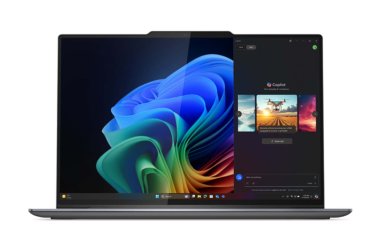
Armed with a contract to build chips for Sony’s PlayStation 4 gaming console, Advanced Micro Devices has now officially established a custom-chip business unit in an effort to break away from its heavy reliance on the slumping PC market.
AMD is staking its future on the custom-chip business, which will use the company’s intellectual property to make specialised hardware for computing devices like tablets, consumer electronics like gaming consoles and high-performance computers. An example is the PS4 chipset, which uses AMD’s CPU and graphics processor technology.
The custom-chip unit will build the “best products” with a dedicated team of veteran chip architects and a rich intellectual-property portfolio tied to mobility, graphics, performance CPUs and connectivity, said Saeid Moshkelani, corporate vice president and general manager at AMD.
“When you combine all of these together it becomes a compelling story,” Moshkelani said.
Cash-strapped AMD hopes the custom-chip business will take the company back to profit. AMD’s major source of income has been the sale of chips for PCs, which is in rapid decline. About 85 percent of the company’s business is “focused on the legacy PC portions of the market, projected to have slowing growth over the next several years,” the company said in a filing with the U.S. Securities and Exchange Commission earlier this week.
PCs are being replaced by tablets, a market in which AMD has virtually no presence. AMD plans to continue releasing new tablet and PC chips, but will update its server chips only in 2014, which could limit its opportunities in the fast-growing server market. The company has also been unable to keep up on chip development with Intel, which is taking away PC and server market share.
The focus on custom chips comes under a new management team led by former Lenovo executive Rory Read, who was named CEO in August 2011. Last year AMD tore up its old product roadmap, and established a new chip design methodology to allow the integration of third-party intellectual property so chips can be customised to customer needs.
AMD’s processors today largely rely on x86 architecture, which is used in most PCs. To diversify, AMD has licensed processor architecture from ARM, whose designs are used in most smartphones and mobile devices. AMD also bought microserver company SeaMicro, from which it got an interconnect technology called Freedom Fabric, which the company is open to using in custom-chip designs.
Read in January laid out a plan to return the company to profitability, saying that the custom-chip business could deliver as much as 20 percent of the company’s revenue by the fourth quarter, and more than half the revenue in the coming years. AMD’s fourth quarter of fiscal 2013 closes in December, and the custom-chip business is already well on its way to achieving the goal of 20 percent of the company’s revenue by then, Moshkelani said.
AMD also has laid off employees and sold its Austin, Texas, campus.
AMD will not shy away from challenging chip designs, Moshkelani said, adding that if a customer wanted x86 and ARM architecture on one chip, AMD will make it happen.
“It’s not something we do after 5 o’clock. It’s a very focused… business unit,” Moshkelani said.
The custom-chip business is not glamorous, but it has stability with a long-term pay-off involved, said Dean McCarron, principal analyst at Mercury Research.
“Any one design win for a million units or more becomes a meaningful business for them,” McCarron said. “The key to all of this is getting the right design win.”
An example is the PS4 chip business, which could generate millions of unit shipments for AMD, and get more profitable with time, McCarron said.
Like the PS3, the PS4 may have the same chip for many years and the initial profit margins may be low. But as manufacturing technology improves, the chip-making cost will drop and generate more profits for AMD.
“Games consoles are a good one. Tablets are going to be big,” McCarron said.
Among the many failures in the custom-chip business, Motorola is a good example of success with a 20-year run, McCarron said. Motorola supplied custom chips for the first laser printers, and had a contract with Apple for PCs and other products that contributed to its success.
“It’s an example of getting in with the right products and customers,” McCarron said.
With the PC market slumping, AMD had to make a change, and the custom-chip business is a good choice, McCarron said. The company doesn’t have financial flexibility like Intel, and it had to choose where to allocate its limited resources.
But it won’t be a walk in the park, as AMD still has to contend with competitors like Intel, Nvidia and others vying for chip contracts, McCarron said.





